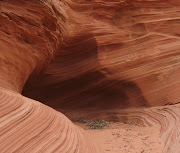 commander and flight engineer, Oleg Kononenko, were brave space virgins on walking outside their 17,000 mph Earth orbiting metallic space condo. July 1oth was a high risk affair, yet necessary walk on the wild side due to
commander and flight engineer, Oleg Kononenko, were brave space virgins on walking outside their 17,000 mph Earth orbiting metallic space condo. July 1oth was a high risk affair, yet necessary walk on the wild side due to an explosive space bolt that was the suspected culprit causing returning Earthbound Russian Federal Space Agency's Soyuz capsules to land beyond the intended targets. The last two times those capsules carted humans and put real fear into them. On a scheduled the rockets park or dock at the International Space Station ferrying up necessities, mail and tools. Fresh water is exceedingly heavy and beginning the installation of a water purification system that takes essentially urine and cleanses and purifying water will be of great import for the ISS's continued expansion.
an explosive space bolt that was the suspected culprit causing returning Earthbound Russian Federal Space Agency's Soyuz capsules to land beyond the intended targets. The last two times those capsules carted humans and put real fear into them. On a scheduled the rockets park or dock at the International Space Station ferrying up necessities, mail and tools. Fresh water is exceedingly heavy and beginning the installation of a water purification system that takes essentially urine and cleanses and purifying water will be of great import for the ISS's continued expansion.
 Many forget that the first person in space was Russian, Yuri Gargarin in 1961. In 1963, the first woman blasted into space was Valentina Tereshkova. Those space firsts, accredited to the USSR, fanned the flames of the space race to command the starry heavens and load them up with Russian, Chinese, American, Nigerian, Japanese - among others - space junk, science experiments and super secret spy satellites as well. Now, in theory, its all about international space cooperation and the need to rely on other nations to build in the capacity to do intricate space walks and set their own experiments to add to the body of science.
Many forget that the first person in space was Russian, Yuri Gargarin in 1961. In 1963, the first woman blasted into space was Valentina Tereshkova. Those space firsts, accredited to the USSR, fanned the flames of the space race to command the starry heavens and load them up with Russian, Chinese, American, Nigerian, Japanese - among others - space junk, science experiments and super secret spy satellites as well. Now, in theory, its all about international space cooperation and the need to rely on other nations to build in the capacity to do intricate space walks and set their own experiments to add to the body of science.Both spacewalks have required the cosmonauts to exit from
the Pirs docking compartment, which also represents the only passage between the space station and the Soyuz spacecraft that serves as an emergency lifeboat. U.S. astronaut Greg Chamitoff will once again spend the entire spacewalk sitting inside of the Soyuz, so that he does not get cut off in the unlikely event of a crisis.Kononenko will install the docking target by riding the long arm of the Strela hand-powered crane to the Zvezda module. Volkov will operate the hand-powered crane and move his fellow astronaut to the target location.
Next, the cosmonauts will use a spacewalker's ladder and move to a different part of Zvezda to inspect some bolt holes. The holes will serve as the location for a future antenna adapter that will serve the Kurs automated docking system.
 waters as their lab sits atop unstable melting polar ice. Those land bound
waters as their lab sits atop unstable melting polar ice. Those land bound  scientists put out an Ice May Day call and await an early rescue as sloshing and mush and breakaway ice is occurring at an accelerated pace. Global warming is causing the early evacuation of North Pole-35 station where two mutts live in huts with 21 researchers and scientists scurrying to pack up specimens and other tools. To the rescue is a nuclear powered ice breaking ship, Artika, which will cut a path for another ship, Mikhail Somov that will take them back to the critical Russian port city of Murmansk. Polar politics is en vogue and heating up this season along with the Earth.
scientists put out an Ice May Day call and await an early rescue as sloshing and mush and breakaway ice is occurring at an accelerated pace. Global warming is causing the early evacuation of North Pole-35 station where two mutts live in huts with 21 researchers and scientists scurrying to pack up specimens and other tools. To the rescue is a nuclear powered ice breaking ship, Artika, which will cut a path for another ship, Mikhail Somov that will take them back to the critical Russian port city of Murmansk. Polar politics is en vogue and heating up this season along with the Earth. 
Russians were studying the flora and fauna that survive and thrive in those geological conditions while making a point to the US primarily about who owns what is still contentious. Unfortunately they started with 3 square miles of ice to explore, build a winterized camp with room for the dogs and their acreage has melted down to a wee bit under 3/4 of a mile.
North Pole-35 is the 35th time Russian scientists have floated across the Arctic since 1937. On previous missions, they’ve helped define Russia's claims to Arctic territory, including the rich oil deposits believed to lie beneath the northernmost ocean.In space and on ice, Russian scientists and explores seem to be having a thrilling time in the name of science.The current expedition started in September 2007, and most last at least a year.
The early rescue is yet another sign that the Arctic sea ice is rapidly disappearing. It worries climate scientists because the impacts of the North Pole melting are unknown. They could include changes in the amount of rainfall and snow across the northern hemisphere. Still, it is of a piece with U.S. ice experts’ predictions that the Arctic could be ice-free as early as September of this year— a situation unknown in recorded human history—thanks to an early start to the melting season and a record retreat last year that left weaker ice in its wake. Russian scientists’ ability to go with the floe in future may be in doubt.

After the stunning world debut of Sputnik, author Brian Harvey looks at historical and current trends in the Russian space program. His book with a long winded titled, but chock full of arresting information is The Rebirth of the Russian Space Program: 50 Years After Sputnik, New Frontiers is a pretty expensive paperback worth the time and effort.










No comments:
Post a Comment